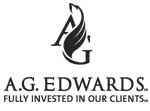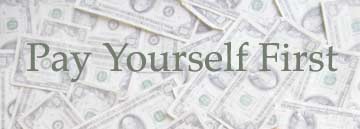| f2 | President's Letter | Seminars | WIPINews | Industry News | Gallery
Highlights & Member Reviews |
|
| Marketing News | Book Review | Workshops | Competitions & Awards | Classified |
MARKETING
NEWS
|
INVEST
IN "YOU" : Pay Yourself First Like it
or not, a side effect of being a freelance photographer is becoming
a small business owner. You are the star talent and the housekeeper/janitor.
You’re the sales force and the accountant. With the right habits,
choices you make for your emotional fulfillment, can translate
into the reality of operating a profitable and sustainable business.
Successful
businesses accumulate wealth by creating more assets than liabilities.
The net worth statement is simply a list of your assets minus your liabilities. To clarify, your Hasselbad ™ may be an asset, but the “practice portrait” of your neighbor probably is not. Think of your income statement as a tank, where water flows in <<<<< and out >>>>>>. Be mindful of making adjustments to the amount flowing out so that there’s always an ample amount remaining in the tank.
Some professional
photographers have a tough time determining what their compensation
should be. Determining how much to pay yourself can be emotional. Cash
flow of many businesses is unpredictable – especially during the
early stages. You may want to consider relying on bonuses rather than
a regular salary for much of your compensation. By doing so, you can
determine when and how much the business can afford to pay you. Bonuses
may come once or several times a year depending on your needs and the
business’s performance. It is OK to seek out additional sources
of income, if your enterprise is not generating enough cash yet.
Now you can easily see your income, expenses and what is left to save. The best business owners take a hard look at expenses and identify where reductions can be made. One trick is to annualize expenses. This method quickly identifies the biggest flexible expenses, such as the daily purchase of designer coffee that may be costing $1000 a year. Now, let’s take a look at how you can pay yourself first. Consider a systematic investment program that lets you save the same amount each month. By doing so, you are not tempted to spend the money before you get a chance to put it into a savings vehicle. Also consider joining an investment group where you can pool together ideas and money. It’s easy to accumulate funds and reach your fiscal goals by investing a modest amount. For example: if you invest $200 per month, after 10 years you would have invested $24,000. But, assuming a six percent compounding rate of return, the value after 10 years would be $31,633! As you can see, even if you contribute small amounts each month, it can quickly add up. The amount you can save in your retirement plan, such as an owner only 401K or S.E.P. IRA, is calculated based on eligible compensation. Generally, the more you earn, the more you are able to save. Because of the tax advantages and substantial contribution limits these accounts offer, you can help keep yourself on track to achieve your retirement planning goals by making the maximum contribution each year. Developing a retirement plan and sticking with it takes time and commitment. Seek out professional advice to for coaching and customization. I love being a financial consultant because it’s creative, fun, interesting, and meaningful. My days are similar to the time when I was a film producer and editor. There are always meetings, phone calls, and opportunities to generate business. Each relationship is filled with asking questions, listening, and creating a holistic and viable solution. My transition to this career occurred when curiosity, greed, and fear inspired me to seek out financial information and expertise. I had a few left hemisphere headaches when I started, but it’s been worth the effort to learn another career, secure my financial future, and help others along the way.  A.G.
Edwards does not render legal, accounting or tax preparation advice. Please
consult your legal and tax advisors for your specific situation. This
article was provided by Shãn Sutherland, Financial Consultant,
Accredited Asset Management Specialist, located in Beverly Hills, California.
A.G. Edwards & Sons, Inc. Member SIPC. A.G.
Edwards does not render legal, accounting or tax preparation advice. Please
consult your legal and tax advisors for your specific situation. This
article was provided by Shãn Sutherland, Financial Consultant,
Accredited Asset Management Specialist, located in Beverly Hills, California.
A.G. Edwards & Sons, Inc. Member SIPC. Special thanks go to the Alumni Association at Art Center College of Design, in Pasadena California USA. Learn more about retirement planning with stocks, bonds, mutual funds, life insurance, and long term care, by visiting http://www.agedwards.com/fc/shannon.sutherland or calling toll free (866)344-5287 ext. 229. A.G.Edwards generally acts as a broker-dealer, but may act as an investment advisor on designated accounts, and the firm’s obligations will vary with the role it plays. When working with clients the firm generally acts as a broker-dealer unless specifically indicated in writing. To better understand the differences between brokerage and advisory services, please consult Important Information About Your Relationship With A.G.Edwards on agedwards.com/disclosures. Shannon Sutherland, Financial Consultant, Accredited Asset Management Specialist, A .G . EDWARDS & Sons, Inc. Member SIPC Beverly Hills, CA (866) 344-5287 ext. 229. WIPI suggest two programs to help you "go for the money," secure your clients and do your follow up work. Freshlists.com, provides mailing lists for Photographers, Illustrators & Reps to reach Ad Agencies, Design Firms, Magazines, Book Publishers and Record Companies and FotoQuote.com an electronic price guide for stock and assignment photography, the only source of pricing information for photographers that gives you powerful Coaching help in every one of its 218 pricing categories. |
Photographic
Art Market
Maria Piscopo / Marketing
ALLWORTH Books

